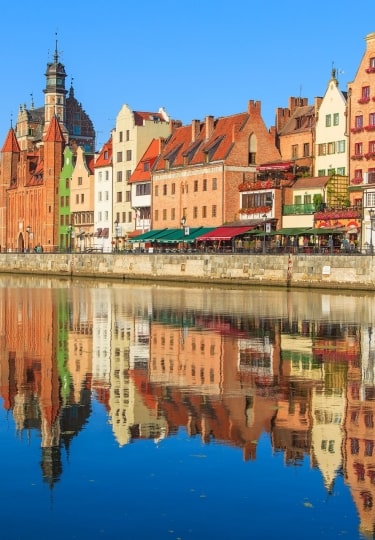Gdansk Old Town (Stare Miasto) is one of Poland’s most charming cities thanks to the fairytale mix of restored medieval streets, magnificent Flemish architecture, and captivating waterside views. Unsurprisingly, given the Dutch-influenced architecture, Gdansk is often compared to Amsterdam.
Walking these architecture-rich streets and exploring one of Europe’s largest historical centers is a delight. From aerial views and riverside dining to grand Gothic architecture and historical sights, these are the best things to see and do in Gdansk Old Town.
Pick Your Favorite Gate
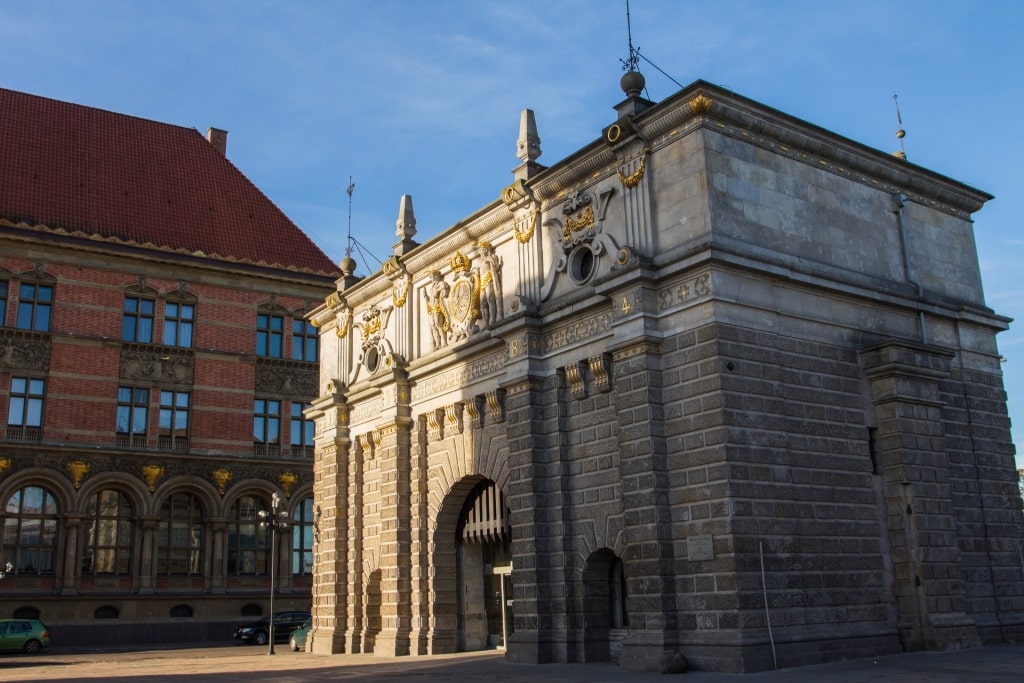
High Gate
Before entering Gdansk Old Town proper, you’ll be greeted by a grand welcome as you pass under one of the imposing gates (bramas).
In medieval times, the Stare Miasto was encircled by defensive walls. By the late 15th century, the walls started to be converted and merged into buildings, while some gates became gunpowder stores.
Not only did this ensure that the gates remained well-preserved until 1945, but many became the base of Gdansk’s gothic architecture.
To follow in the footsteps of nobility, enter via the renaissance High Gate (Brama Wyżynna). This is known as the start of The Royal Route, as it was the path Polish royalty would take to reach the Motława River.
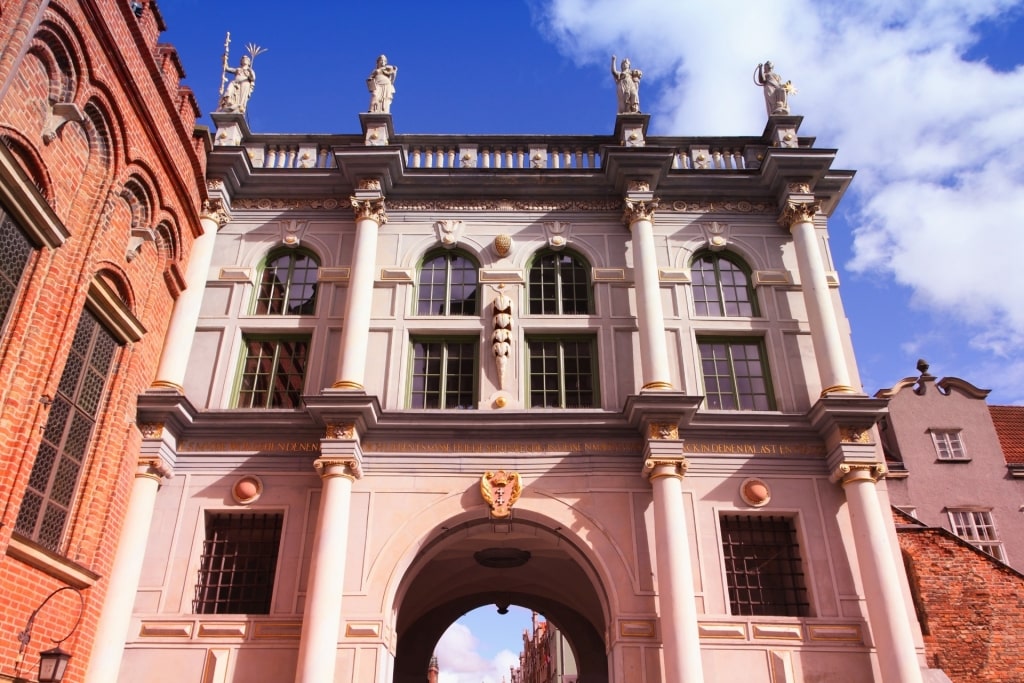
Golden Gate
Just beyond, the Golden Gate (Złota Brama)—a Dutch-influenced and statue-topped entrance—follows, marking arrival to the main street, Dluga.
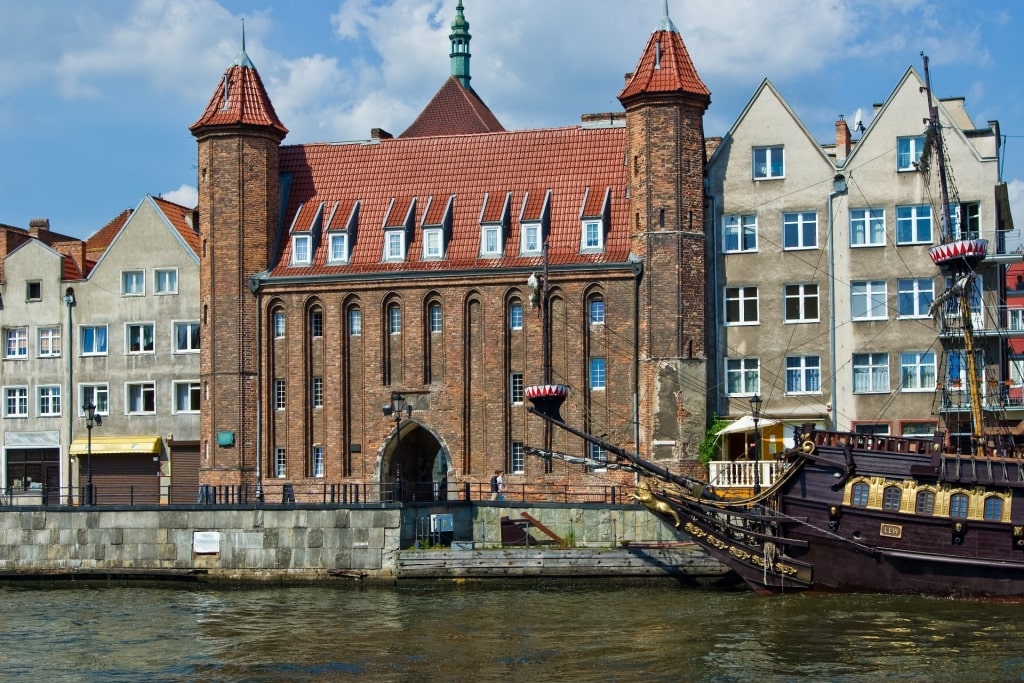
St. Mary’s Gate
Should you enter from the riverfront, your entrance to the Old Town core will be just as impressive. Choose from the city’s most prominent entrance, the four-arched Green Gate (Brama Zielona), Gothic-style Chlebnicka Gate, which is the best preserved, or St. Mary’s Gate (Brama Mariacka), which cuts through a turreted red brick building.
Climb the Tower of St. Mary’s Church
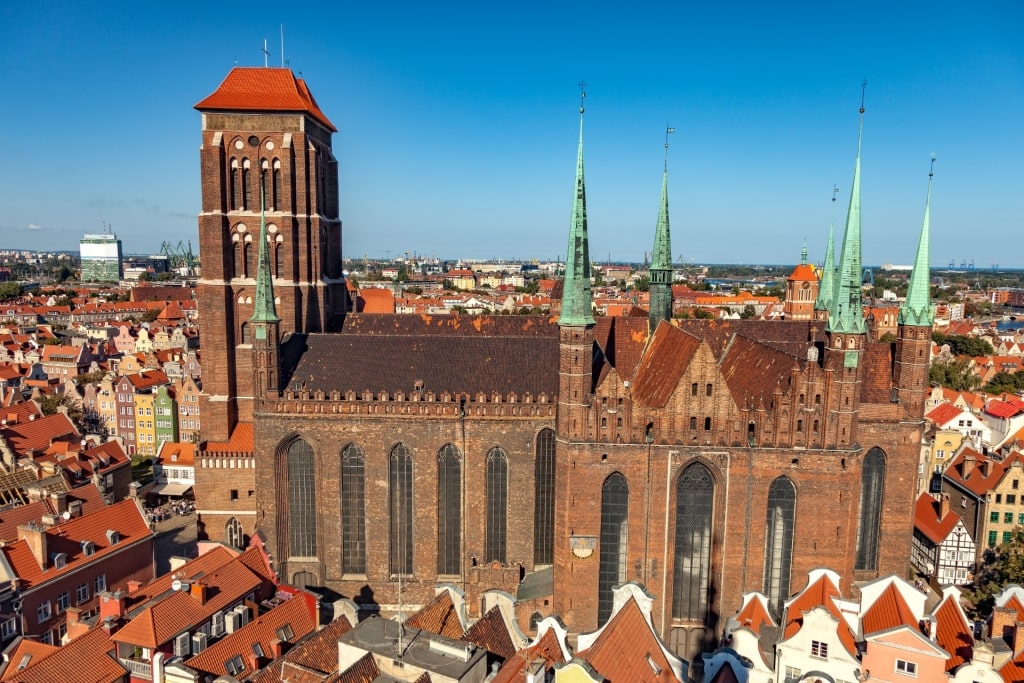
St. Mary’s Church
Standing proud in the heart of Gdansk Old Town is St. Mary’s Church, a hulking Gothic structure claiming the title of one of the world’s largest brick churches. With space inside for some 25,000 worshipers, it’s a hauntingly vast space.
The basilica was consecrated at the start of the 16th century and later heavily damaged towards the end of WWII.
Restoration works started quickly in 1946, restoring the vaults to their former glory. Later, in the 1980s, the church became something of a refuge for the Solidarity social movement, making the most of the building’s size.
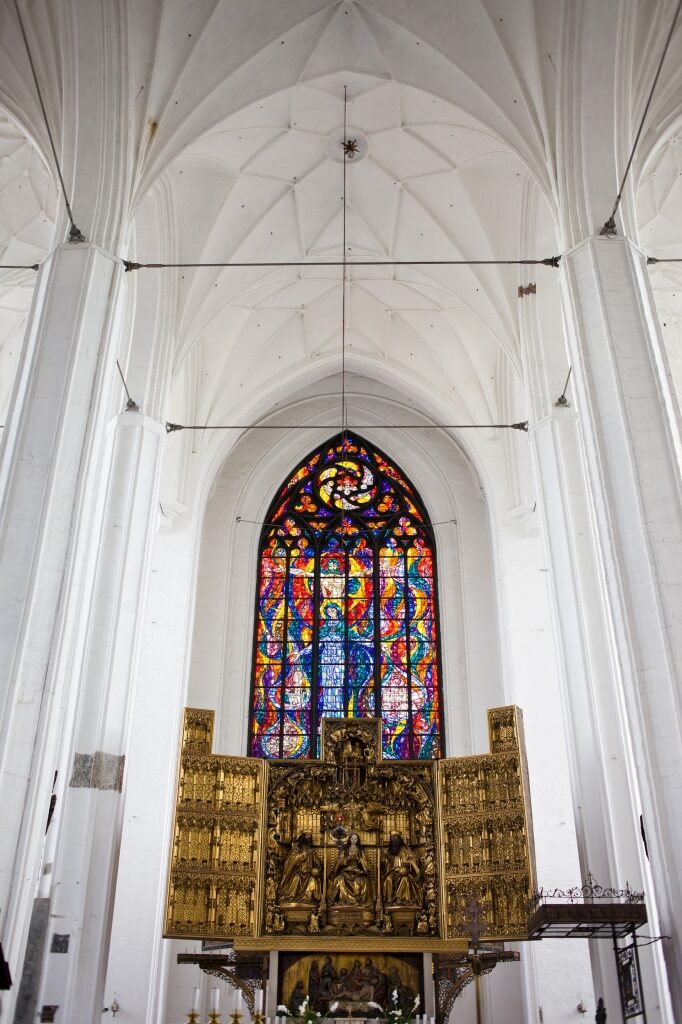
St. Mary’s Church
Inside, the rather plain white nave gives way to plenty of treasures in the 30-plus chapels. One of the most intriguing attractions is the wooden constructed 15th-century astronomical clock. Visit just before midday to see the figurines come to life.
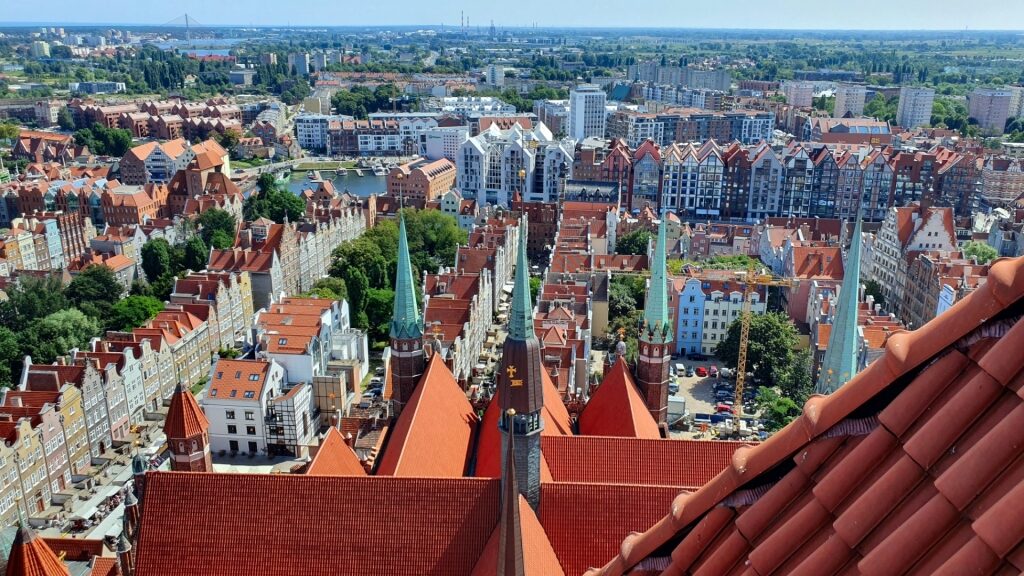
View from St. Mary’s Church
For the best views over Gdansk Old Town, climb to the top of the 256-foot high tower. While the 400-plus stairs to reach the viewing platform are certainly a workout, the views are worth it.
Gaze out across the city’s pretty pastel-hued buildings, copper rooftops, and sharp spires for a fantastic panorama.
Marvel at Long Market’s Architecture
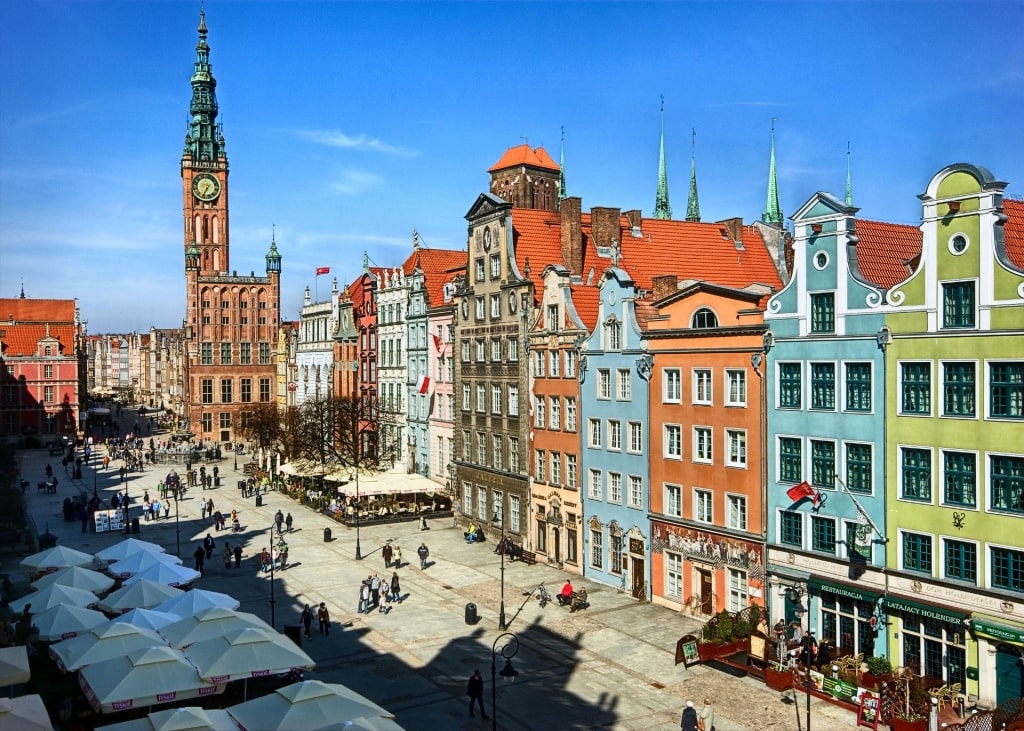
Long Market
Serving as the city’s most emblematic location since medieval times, Long Market (Długi Targ) is now a major pedestrianized thoroughfare lined with architectural marvels.
With its history rooted as a merchant street, the avenue is so named due to it taking on the role of a more traditional “market square”—albeit in a more elongated way.
Long Market is one of the quaintest places in Gdansk Old Town to pause and enjoy a coffee, people-watch and admire some of the city’s grandest buildings.
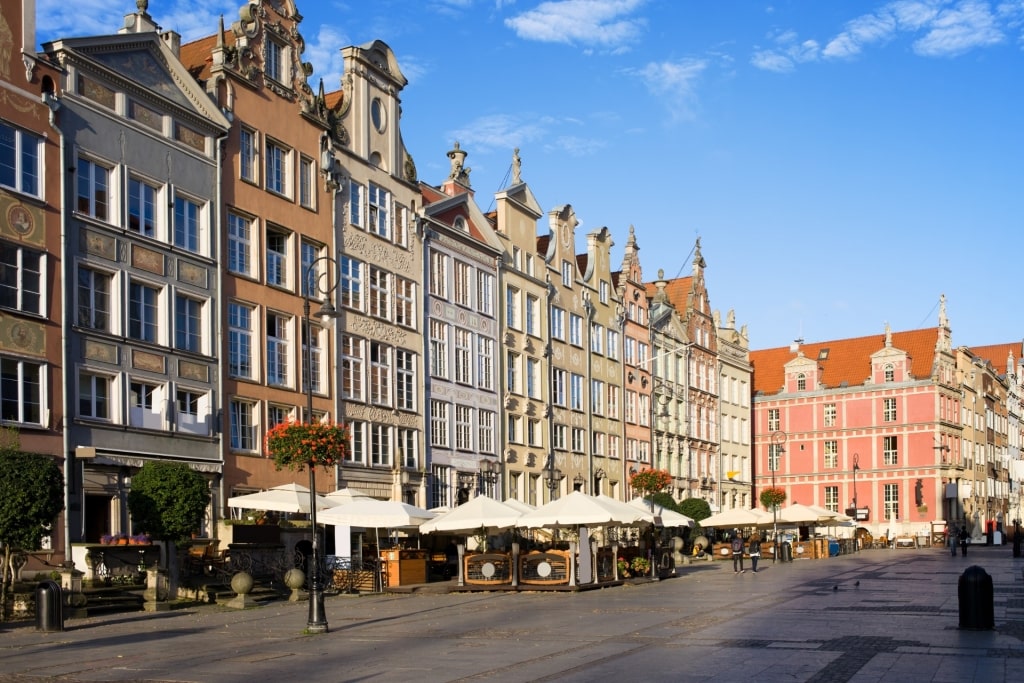
Long Market
Here, you’ll see some of Gdansk’s most notable Flemish and Dutch designs, with colorful façades and stepped roofs aplenty.
Notable buildings include the Town Hall, a soaring gothic-renaissance brick building topped with a heaven-reaching clocktower, and the Dutch Mannerism and Artus Court, which stands out for its high windows.
Pause at Neptune’s Fountain
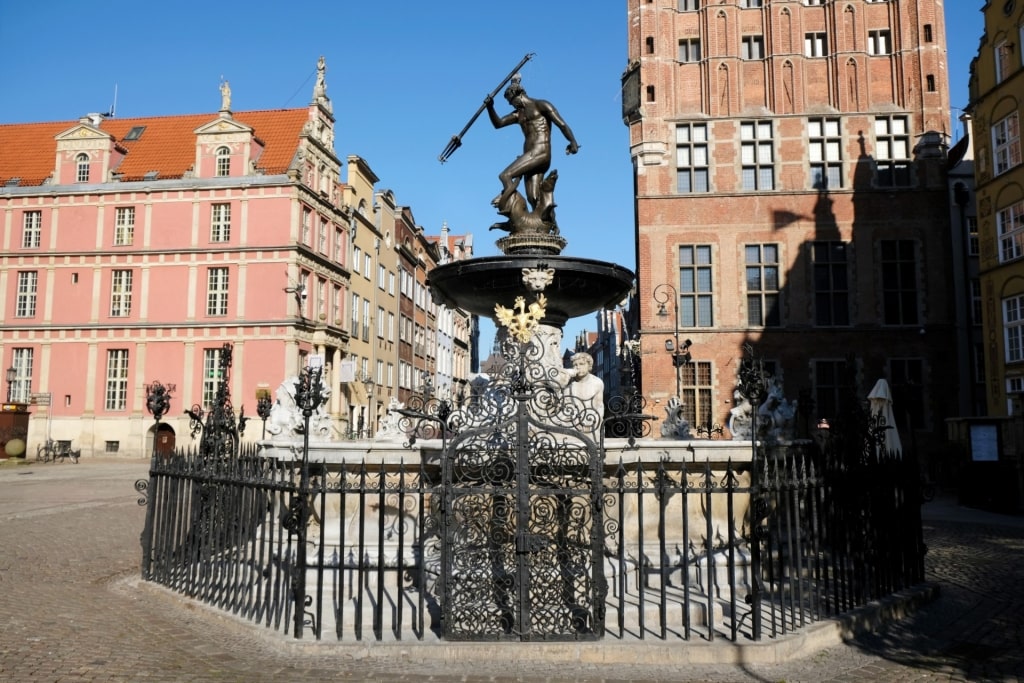
Neptune’s Fountain
Located at the center of Long Market is Neptune’s Fountain, one of the city’s most prized attractions.
Dedicated to the Roman god of the seas, the bronze sculpture—designed by Flemish artist Peter Husen—was erected in the 17th century, replacing an earlier fountain.
Legend has it that Goldwasser (a Gdańsk liquor with floating gold pieces) was born here when Neptune struck the gold coin-littered water with his trident, leading the city’s liquor to flow freely.
Learn the City’s History at Artus Court and the Town Hall
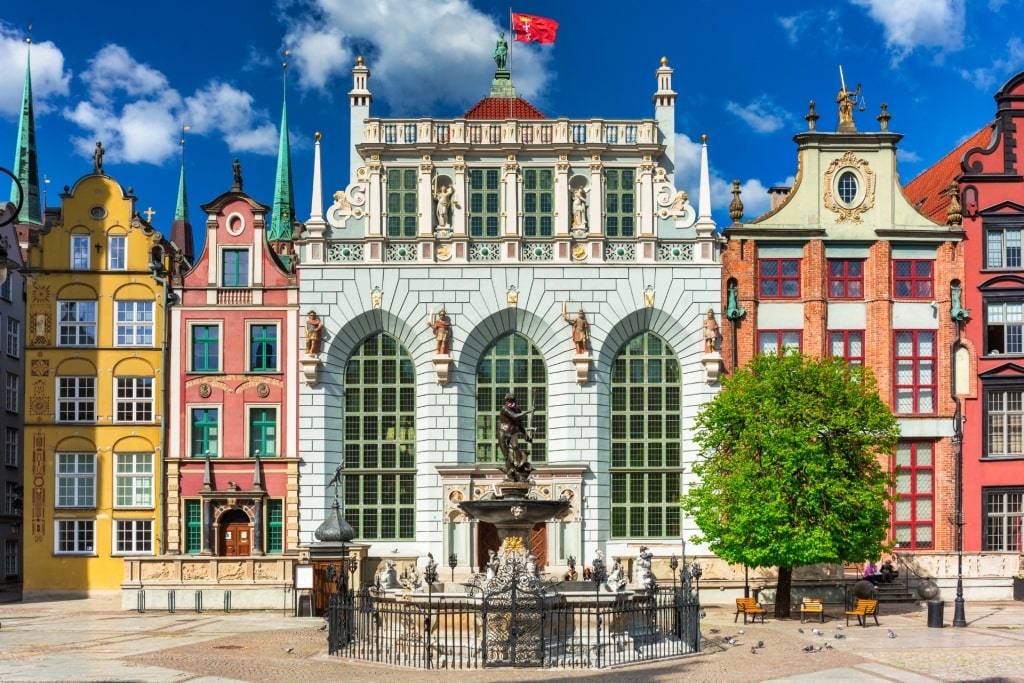
Artus Court
Artus Court was originally constructed in the 12th century as a meeting place for merchants and the city’s upper classes. Sadly, the original building burned down some 150 years later and was subsequently rebuilt in the current style.
While the aristocrats and traders are long gone, many of the interior’s original features remain. Standouts include the polished marble floors, webbed ceilings, and the fascinating tiled furnace—the largest in Europe. The soaring stove’s 520 hand-painted tiles depict European royalty.
Atrus Court doubles as part of the Gdansk’s History Museum, so you’ll be able to study photo displays of nobility, historical records, and various murals dotting the grand rooms.
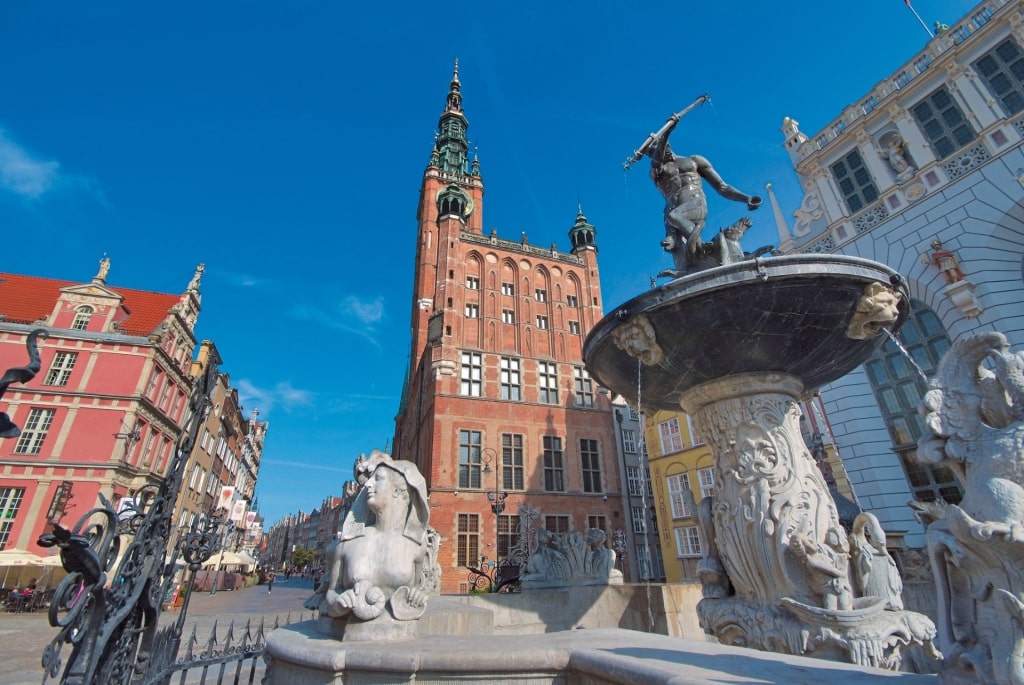
Town Hall
The second part of the city’s museum is inside the nearby Town Hall. Here, the lavish hall (Sala Czerwona) was mercifully spared from the WWII bombing. You can find a third sector of the museum inside The Green Gate.
Wander Along the Waterfront

Długie Pobrzeże
Leaving Gdansk Old Town’s interior under the Green Gate’s aches, follow the sea breezes to Długie Pobrzeże, the city’s waterfront.
This peaceful embankment traces the Nowa Motlawa—a branch of the much longer Motlawa River. Initially, this man-made tributary was created as a moat. Yet, later it was enlarged to be navigable, becoming an essential part of the city’s industrialization.

Długie Pobrzeże
It’s a pretty stroll along the waterfront, with bridges linking to Granary Island. The Galleon-style ships and The Crane, an old cargo transferring structure and now part of the National Maritime Museum, add to the city’s seafaring story.
You’ll find some vista-worthy cafes and restaurants along this stretch, although, for the best views over Gdansk Old Town, you’ll want to head to the wharf on the other side.
Dine With a View on Granary Island
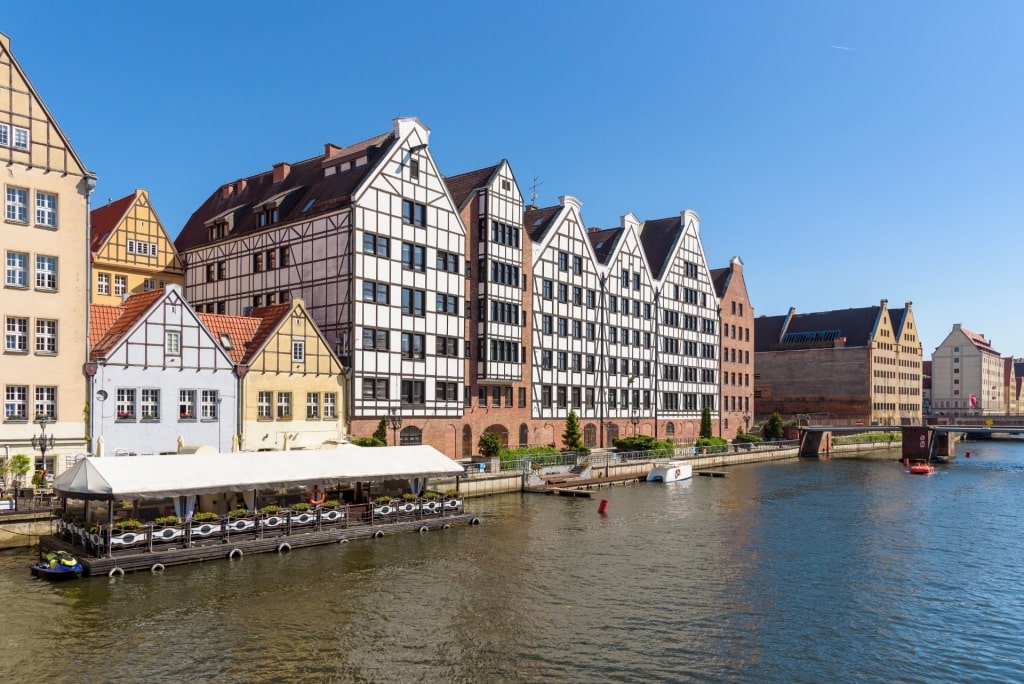
Granary Island
For some of the finest water views of Długie Pobrzeże, cross one of the bridges to Granary Island.
Sitting in the middle of the Nowa Motlawa, this artificially created island has more than played its part in the city’s industrial and commercial past—most notably in the 17th century when granaries occupied the land.
Following an extensive regeneration project, the waterfront has seen a significant overhaul. Settle down at one of the trendy restaurants or riverside bars, order your favorite drink, and relax on the riverside, admiring the reflections of Gdansk Old Town.
Dive Into the National Maritime Museum
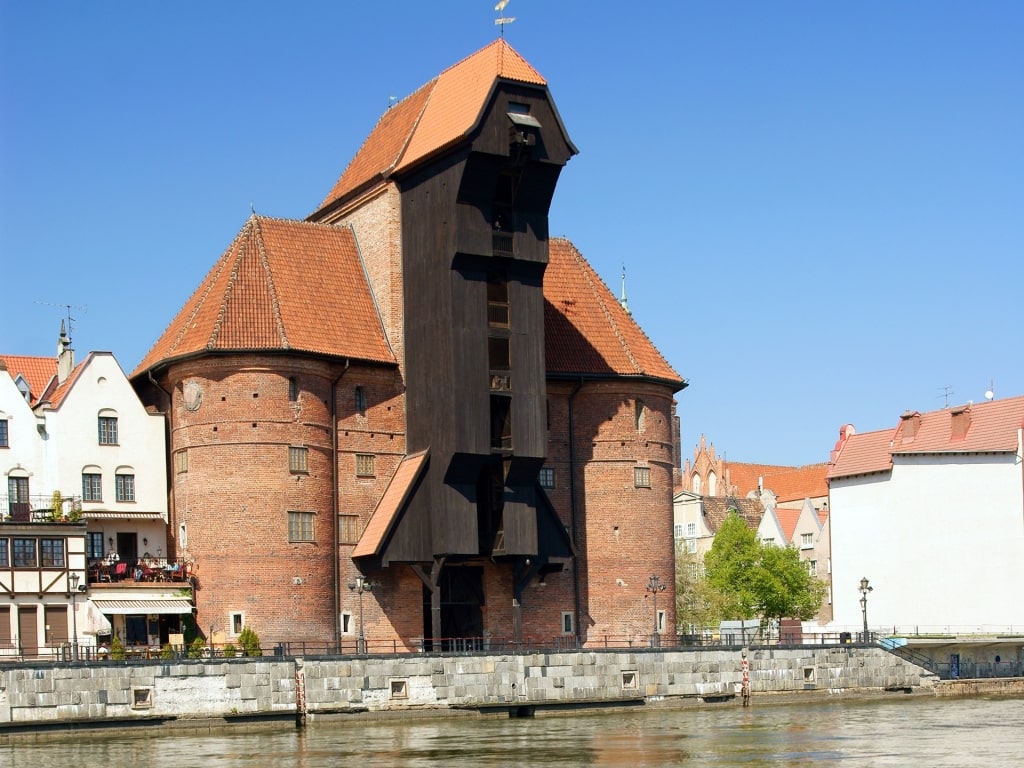
National Maritime Museum
Spanning eight different buildings, the National Maritime Museum takes its role in preserving Poland’s water-facing history seriously.
The Crane, something of a city emblem, is a wooden structure attached to the Brama Żuraw. Initially constructed in the 14th century, it was destroyed in a fire around one hundred years later.
It was reconstructed then and once more following WWII, and today, you can see a collection inside covering the port and Polish lighthouse.
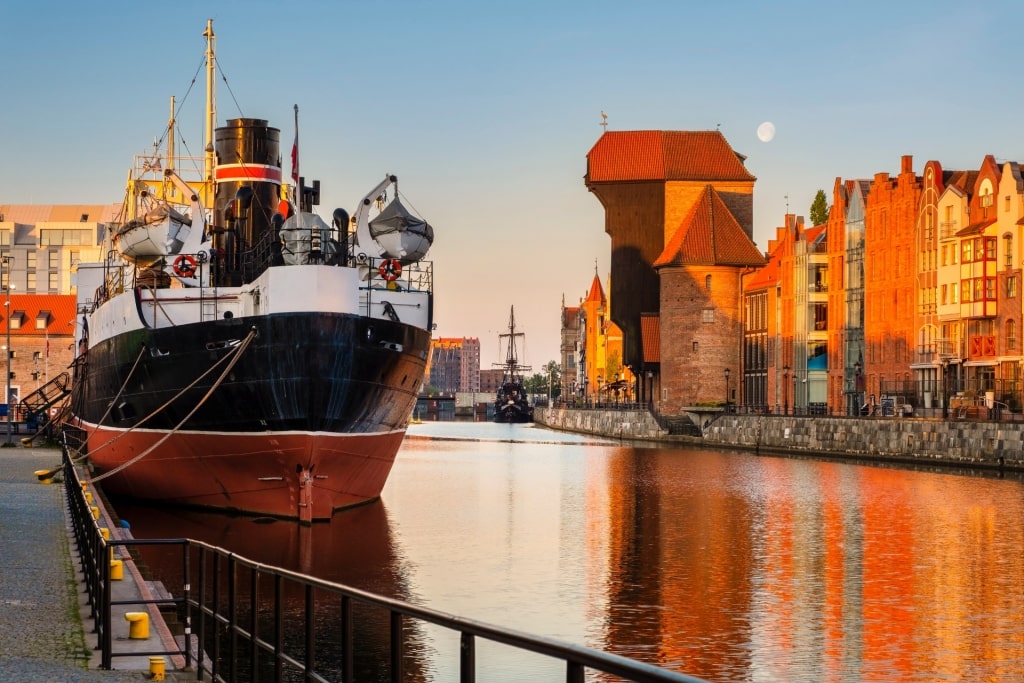
SS Sołdek
Further along the embankment, you’ll find the Maritime Cultural Centre and across the river in the dockyard, another main collection. In front is the SS Sołdek, a retired Polish freighter. All of the exhibitions share the same theme: Gdansk’s importance as a seaport.
To tour the National Maritime Museum’s complex, you’ll want to allow a few hours. A ferry across the river is included in the ticket to make traveling between quicker and easier.
Shop for Amber Souvenirs on Mariacka Street
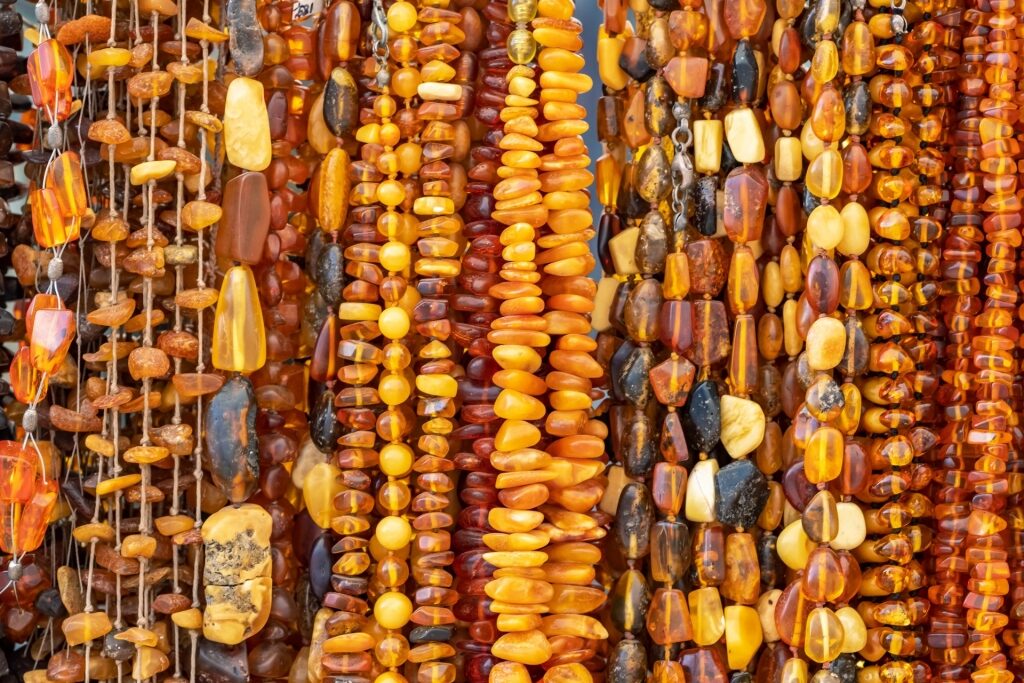
Amber
Amber has played an essential role in Gdansk’s history, earning the organic gemstone’s nickname “Baltic Gold”.
Gdansk has long been considered the capital of the Amber Route—which saw the precious material traverse from the North Sea into the Baltic Sea and finally, the Mediterranean—and the material’s importance lives on today.
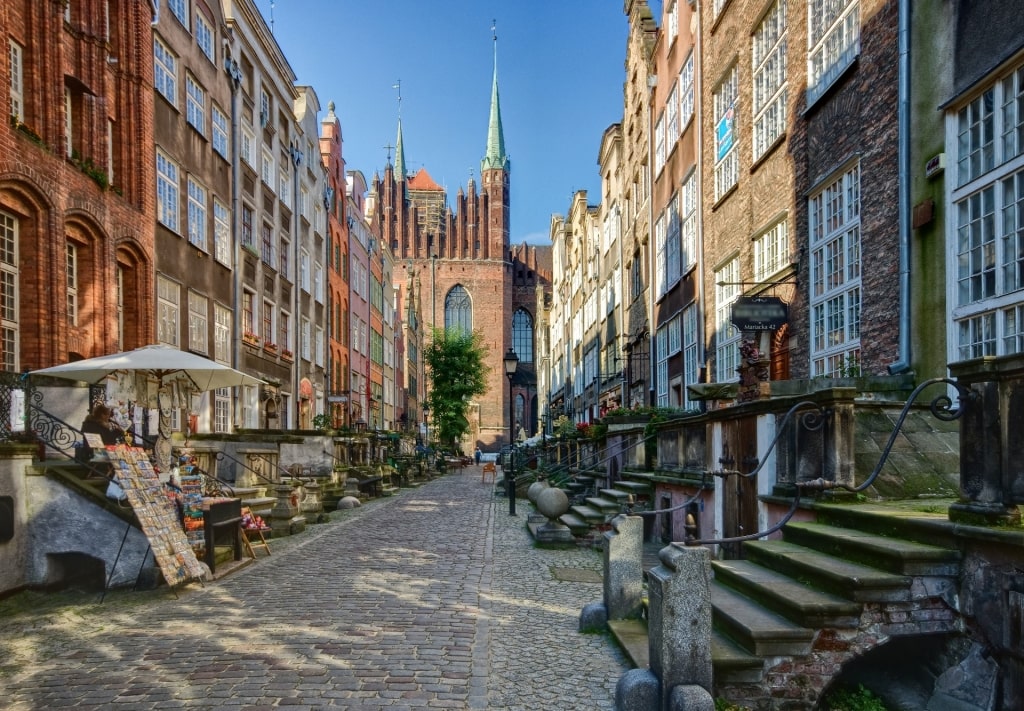
Mariacka Street
Take a stroll down Mariacka Street, one of the city’s prettiest, and you’ll find countless souvenir stores selling items crafted from the golden resin. Artisans have long had their shops here, and specialists have been crafting jewelry and other goods for centuries.
Should you wish to learn more about the city’s amber history, head to The Amber Museum, housed in an old prison outside Gdansk Old Town.
Inside the excellently renovated building, you’ll find a modern space that provides historical context and examples of the finest works produced from this treasured material.
Pay Your Respects at the Royal Chapel
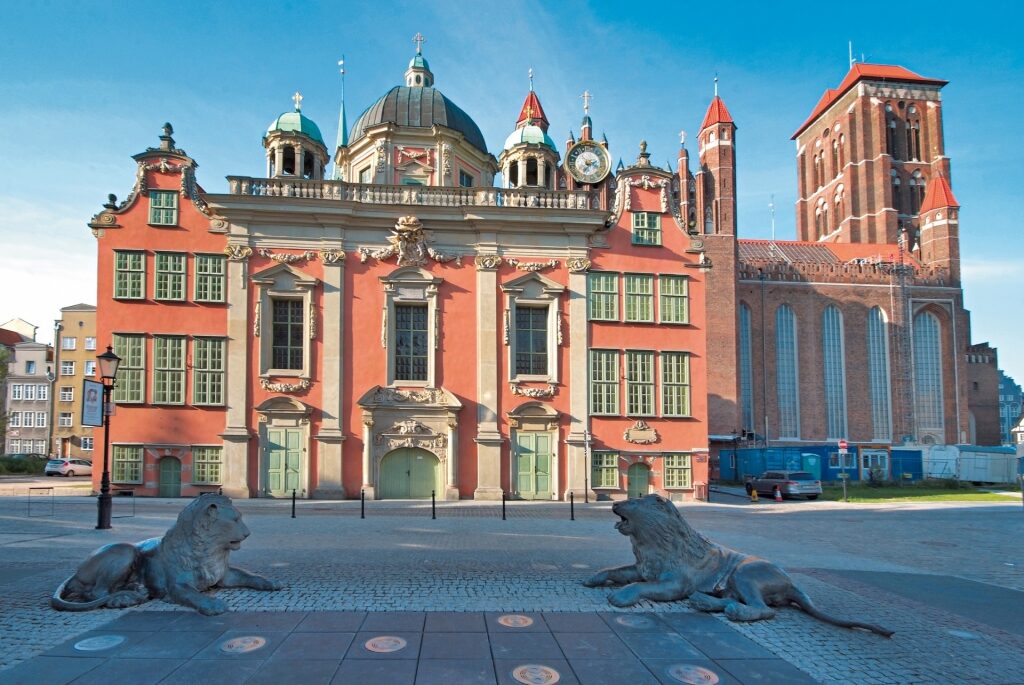
Royal Chapel
Salmon-hued and ornately decorated, Gdansk’s Baroque Royal Chapel was constructed in the 17th century. However, following a fire in 1945, the space remained closed for many years.
Following an extensive conservation program, the chapel re-opened in 2006, although the interior is relatively subdued. Only visible during mass—outside of these hours, it remains closed to the public—the facade is undoubtedly the main attraction.
Admire Art at The Great Armory
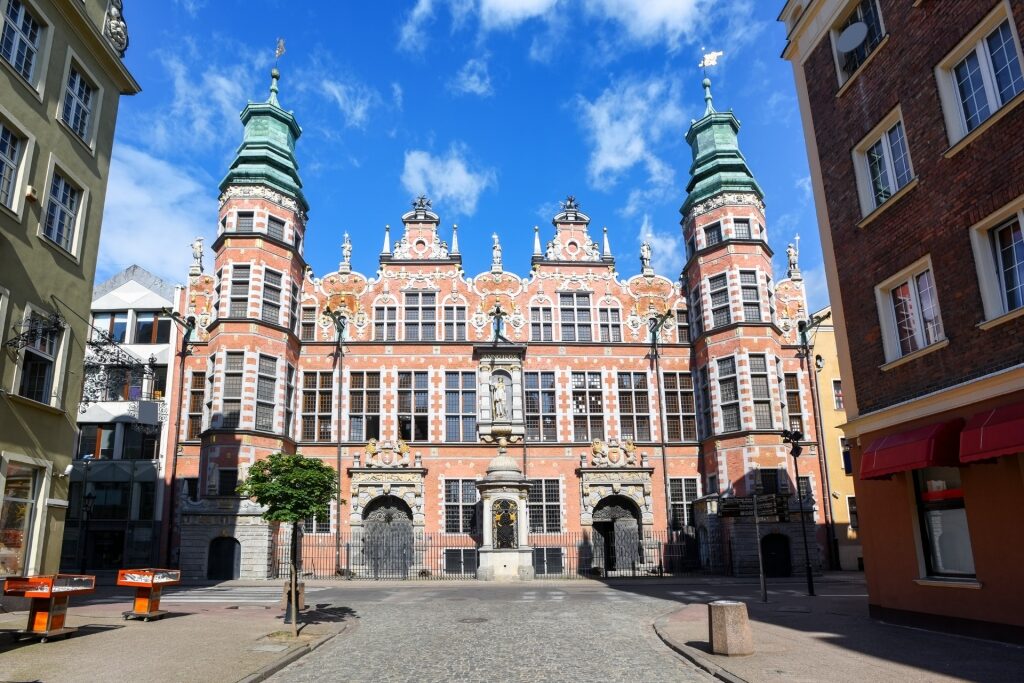
The Great Armory
Located inside one of the finest Dutch Renaissance buildings in Gdansk Old Town, it’s fitting that this grand space now houses a collection of art.
Constructed alongside the defensive walls in the early 17th century, it served as an armory until WWI. As with many of the city’s finest buildings, it was tragically damaged in later years. Now, fully restored, the two burly towers which bookend the symmetrical structure are standing proud again.
Inside, you’ll find a collection courtesy of the Academy of Fine Arts. Often thought-provoking, the pieces add a splash of color to the otherwise stripped-back interior. Even if the art doesn’t enthrall you, the facade is reason enough to seek out the building.
Devour Hearty Traditional Dishes

Schabowy
No visit to Poland would be complete without tasting some of the country’s traditional hearty fare.
Two dishes in particular are worth sampling. First, schabowy, the nation’s national dish of breaded pork cutlets served with potatoes and cabbage. Second, try pierogi, Poland’s beloved filled dumplings.

Milk bar
For traditional food, the “milk bars” (bar mleczny) are an intriguing option. Dating back to Communist times, these cafeterias offered subsidized traditional dishes.
A few of these relics remain in Gdansk, and while they are now privately owned, they still provide a chance to try traditional dishes at a more reflective price.
Set Sail on a Galleon-Style Ship
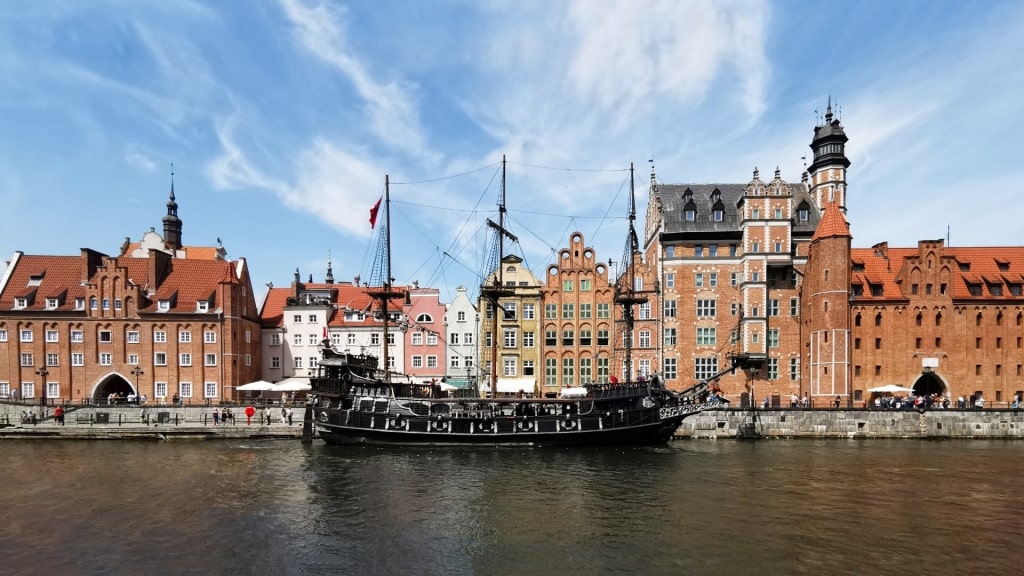
Black Pearl
For a 90-minute adventure onboard a 17th-century sailing boat, it’s all aboard the Black Pearl, departing from Długie Pobrzeże.
Not only will boarding this dark, wooden-clad vessel feel like stepping back in time, but you’ll also have the chance to explore another essential part of Gdansk, Westerplatte.
This was an important battle site in the early days of WWII and you can walk among ruins and forts and witness the Westerplatte Monument. Dedicated to the many Polish soldiers who defended the coasts in 1939 and fought throughout the war, it’s a somber sight.
Opt to either take a scenic return trip or disembark at Westerplatte to tour the peninsula before boarding the next sailing back to Gdansk Old Town.
Tour the Museums Beyond the Walls
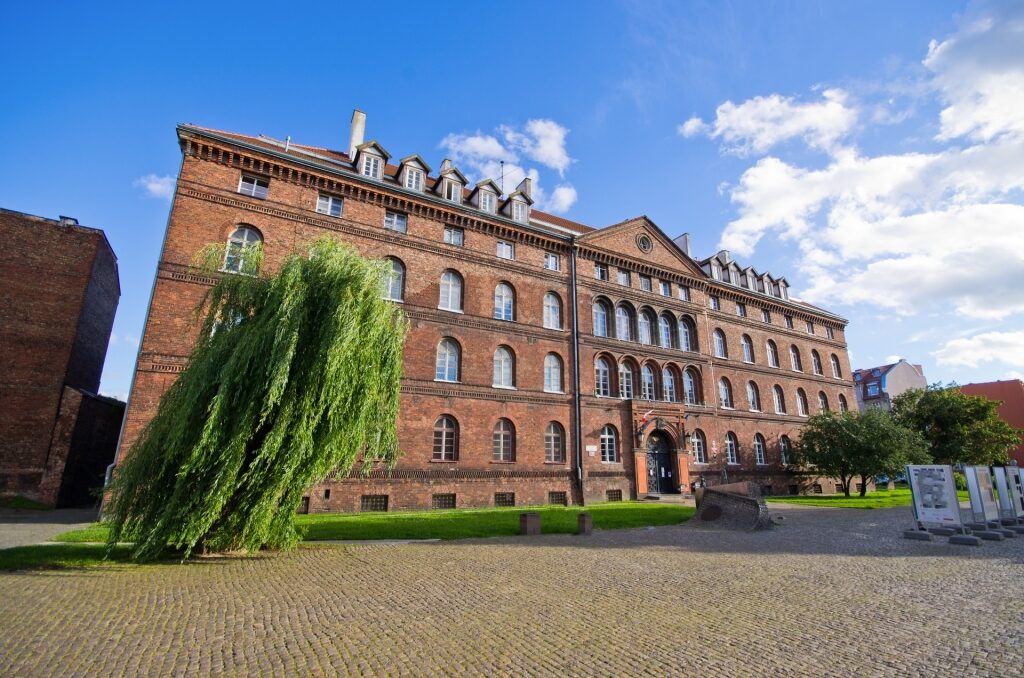
Museum of the Polish Post Office
Outside of Gdansk’s Old Town’ walls, you’ll find a few museums a short stroll away, each adding another chapter to the city’s story.
At the Museum of the Polish Post Office—which previously housed the government intelligence operation—you’ll find a small collection covering the events of September 1939 and the start of WWII.
For a more in-depth understanding, the Museum of the Second World War provides a deeper dive, covering the war in its entirety.
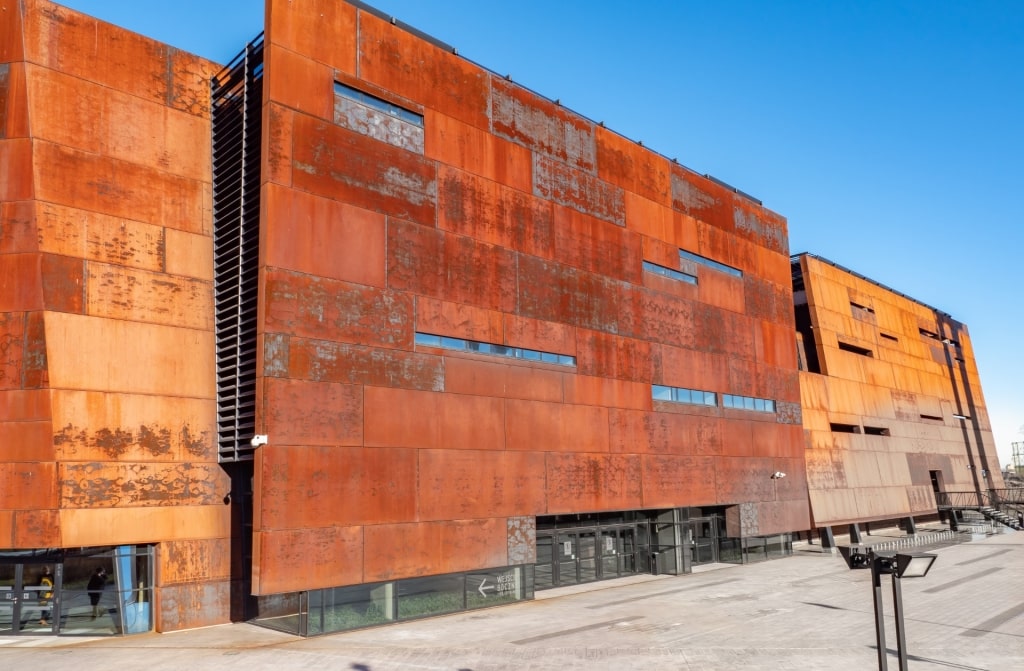
European Solidarity Centre
Slightly further still is the European Solidarity Centre, dedicated to the historic Solidarity movement. This trade-union-led protest may have started in Poland but spread to many other communist states.
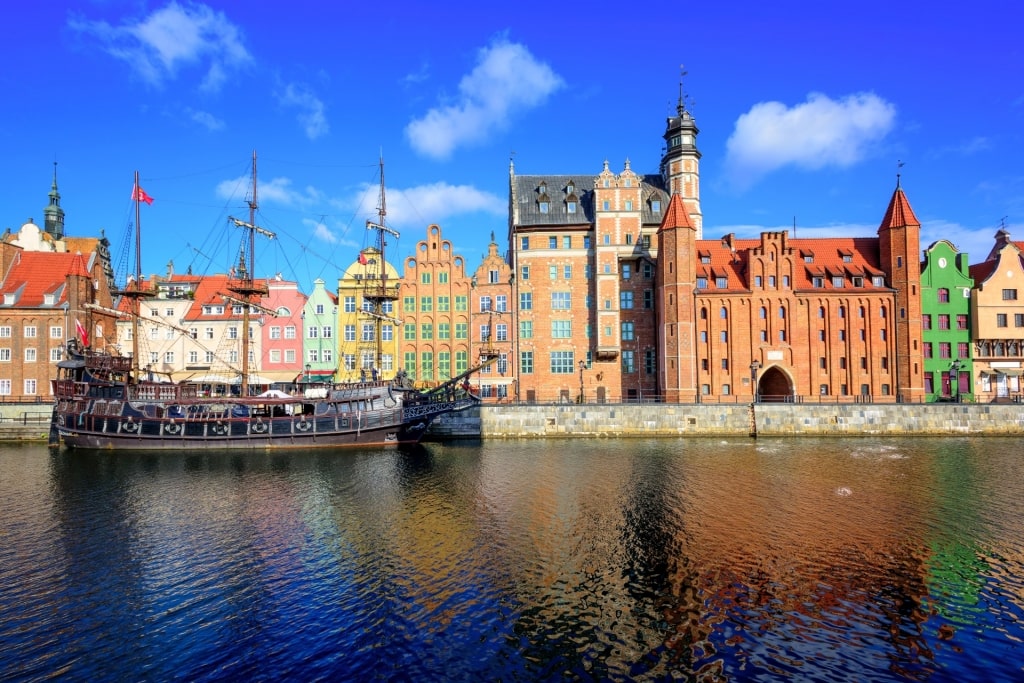
Gdansk
Keen to explore the storied history and best sights of Gdansk Old Town? Browse Celebrity’s cruises to Gdansk to start planning your next vacation.
